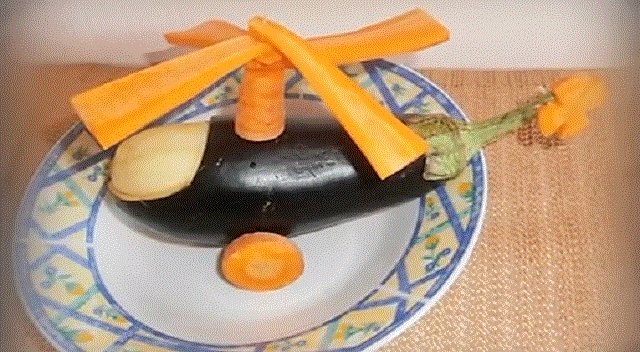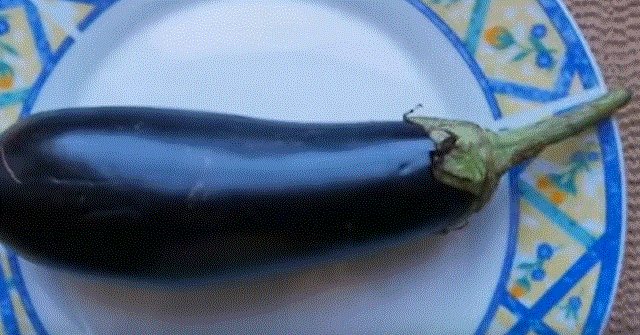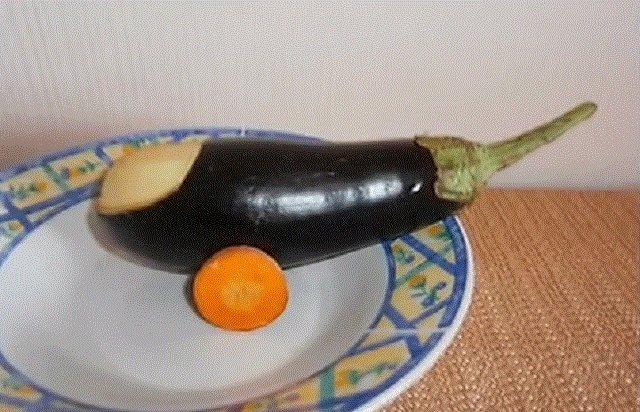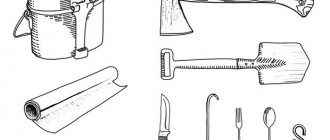How to cook a frog
In many countries, frog meat is a delicacy. Frog meat tastes like chicken. Most often, frog legs are used for dishes, but the body itself can also be cooked. It is believed that the French know better than anyone how to properly cook a frog.
In addition, this animal is very easy to catch. Therefore, if a person finds himself outdoors in an emergency situation and knows how to cook frogs over a fire, he will not starve.
Before you can cook a delicious frog, you need to marinate the meat. It is advisable to replace the water in which the future dish is marinated every three to four hours. After three to four cycles you can start cooking.
Before you cook a frog, you need to catch it. However, if the action takes place at home and not in the forest, it is better to buy meat. This is explained by the fact that not every frog is edible, so if possible, it is better not to put your life at risk. As an additional delicacy for the table, you can cook mussels in shells.
To learn how to cook a river frog, just read a few recipes. In nature, these animals can be fried or stewed - any method will be equally tasty.
Extreme food sources. Amphibians - frogs and toads

Man is at the top of the food chain for a reason. In extreme situations, he can eat almost anything. After all, personal survival is somehow more important than any standards of decency and habits. But no one said that this would pass without a trace - there is a high risk of psychological trauma, since few people are able to eat a cheerfully moving larva and not experience acute internal contradiction. Therefore, in order to avoid this unpleasant situation, every lover of extreme tourism should accustom himself to the idea that when he gets his hands on it, even a frog may seem very tasty and edible.
How to cook frog legs at home
Frogs in tomato sauce
To prepare you will need:
We recommend reading:
Flight delay compensation
- about a kilogram of cleaned frogs;
- can of tomato puree;
- half a glass of white wine;
- vinegar;
- olive oil;
- spices.
The meat is washed under running water and then dried with a towel. Place the pieces into a heated frying pan and fry until golden brown on all sides. Then you need to add wine and vinegar, when they evaporate, add tomato puree. After about two-thirds of an hour, the dish is ready.
Frog fillet with curry
Required:
- frog fillet;
- breading mixture;
- zucchini;
- Bulgarian pepper;
- green beans;
- carrot;
- curry sauce;
- greenery.
Before cooking, cover the meat with water and leave for several hours. It will be saturated with moisture, which will only improve the taste. Then you need to cut the fillet into portions and fry it in the breading mixture. Served with stewed vegetables.
Frogs in Chinese
To prepare you will need:
- frog meat;
- chilli;
- wolf's bast;
- salt;
- oyster sauce;
- sunflower oil;
- Sambuca.
Chinese frog dishes are not as famous as their French counterparts, but they are just as famous and just as delicious. In ancient China, frogs were considered sacred. They were revered and protected. That is why the frog dish is not as publicized as in France.
The dish will require about two dozen frogs. They need to be cut and skinned. For convenience, you can separate the legs from the body. The garlic needs to be peeled, chopped and mixed with the rest of the spices. Spices are thrown into hot oil, fried for half a minute, then meat and sambuca are dropped into the frying pan. After a few minutes, the dish is ready to eat.
How to make crafts from vegetables? — Eggplant helicopter

Required:
- Eggplant
- Carrot
- Toothpicks
- Knife
Master class - crafts from vegetables:
Take an eggplant with a slightly curved tail.

Cut two wheels 0.5 cm thick from the carrot. These will be the wheels. We attach them with a toothpick.

Using a knife, peel the top of the eggplant. This will be the front part of the helicopter.

Next, take the carrots and cut them into 4 equal plates.

Let's also cut off a part of the carrot 4 - 5 cm long. This will be the post on which the propeller will be attached.

We attach the carrot plates to the post using a toothpick.

We also cut a circle from the carrots and use a knife to cut out triangles in it.

This will be the screw. We attach it to the tail of the helicopter using a piece of toothpick. The helicopter is ready.
Recipes for frog legs
Snails with frog legs
To prepare you will need:
- fifty Burgundy snails;
- shallot;
- chives;
- White wine;
- milk;
- flour;
- frog legs;
- butter;
- fresh greens.
The meat must be prepared in advance: marinate the frog legs, clean and chop the snails. The shellfish should be boiled for an hour along with the onions and wine. The frog's legs should be soaked in milk for this hour. After this, the paws need to be dried with a towel and fried in the breading mixture. Then the entire mixture, which has been boiled for an hour, is poured into the frying pan. The dish is stewed for several minutes.
We recommend reading:
How to light a fire without matches
Frog legs in tomato sauce
To prepare you will need:
- frog legs;
- olive oil;
- garlic;
- onion;
- celery;
- tomatoes;
- flour;
- salt;
- butter;
- pepper;
- toast;
- greenery.
To prepare tomato sauce, mix garlic, onion, celery and olive oil. The mixture is fried until it turns brown. Then add tomatoes and cook for about ten minutes. Frog legs are fried in another pan. Served together.
Author of the publication
offline 2 years
Nika
7
I am interested in hiking and traveling, photography and videography. I have been going hiking since childhood. The whole family went and went - sometimes to the sea, then to the river, to the lake, to the forest. There was a time when we spent a whole month in the forest. We lived in tents and cooked over fires. This is probably why I am still drawn to the forest and, in general, to nature. I travel regularly. About three trips a year for 10-15 days and many 2 and 3 day hikes.
Comments: 0Publications: 668Registration: 10/23/2018
Nika Survival in the wild, Nutrition in the wild, Articles
Hello everyone, I decided to post a short article. One day, maddened by the horror that began to happen in the city, you run headlong away and find yourself alone in a deep taiga forest. Oh, great forest, glory to you, savior from many troubles! Are you lost, are you hiding from the Chinese, who have begun their long-awaited military invasion, you will have to get water, food, arrange an overnight stay, get your bearings, and begin to survive. Taiga, dense, huge, dive in - no one will find it. You have nothing, but you want to eat more and more, what should you do? I will make you happy, my friend, there is a way out! And it’s called, as you already guessed from the title of the post, the Frog Diet. Which animal is the easiest to catch? That's right - Frog. The legs of these amphibians are not such a rare sight on more refined tables, especially in Europe, where they are an expensive delicacy. Although many of the frogs consumed by Europeans are farmed here on the continent, particularly in Yugoslavia, many more come in frozen form from Cuba and the United States, where the product is not yet widely available, with the possible exception of the southern states where Nighttime frog hunts provide hobbyists with a key ingredient in stews. They are not popular in the UK either. The venerable chef of London's Carlton Hotel, Auguste Escoffier, was able to offer frog legs as a snack to the Prince of Wales, only calling this dish cuisses de nymphes d'aurore - legs of the nymphs of the dawn.
Where does such disgust come from? Hard to say. Perhaps it has to do with the ridiculous appearance of frogs and the numerous jokes associated with them. Moist skin, without fur, feathers and scales, the hypnotizing look of bulging eyes, a huge mouth, the ability to live both in water and on land, where they move mainly by jumping, as well as a deep, “visceral” voice make them too unusual to cause appetite (although if we talk about appearance, chickens seem to me much more ridiculous creatures). It is possible that the small size of these amphibians, comparable in size to songbirds, also plays a role, which causes inconvenience when cooking. Kermit the Frog from Sesame Street probably doesn't help popularize the product either. Be that as it may, it is not easy to find frog legs in the supermarket, except in specialized stores and in the form of canned food, which, like frog meat dishes in restaurants, are offered at a clearly inflated price.
“Prejudice against frogs and salamanders as a food source stems from the fact that they are cold and slippery, the unattractiveness of their marshy, algae-covered habitats, and the expectation that they “smell of mud,” writes Calvin Schwab in his remarkable study unusual products called “Forbidden Cuisine”. “I know from my own experience that these expectations are never justified and that a person who was able to suppress his disgust and ate at least a piece of a frog’s leg or who was tricked into tasting frog meat invariably admits that this food is superior in aroma and tenderness.” the most successfully cooked chickens.”
Another misunderstanding is related to the common misconception, supported, among other things, by the French culinary encyclopedia “Gastronomic Larousse,” that only frog legs are edible. Although they are indeed the most fleshy, in many parts of the world frogs are happily eaten whole without any harm to health, as Lamai and her family do in Thailand during the monsoon season, when the frogs awaken from hibernation and emerge from their holes in the dams that separate rice fields.
The French encyclopedia also emphasizes that pre-processing frog legs is not an easy task. First, the frog is skinned, then the legs are cut off at the base so that they do not separate from each other. After removing the webbed feet (to hide the origin of the feet and make them look like small chicken feet?), the feet are soaked in cold water for 12 hours, changing the water every 3-4 hours. As a result, the meat becomes white and, saturated with water, swells.
Next, the legs are prepared in different ways: marinated and fried on skewers, rolled in flour and fried in a frying pan, fried with onions in butter, or made into soup with shallots and sweet white wine. In upscale restaurants in Thailand, where the drumsticks are sometimes called rice chicken (sourced from rice farms in the north of the country), they are cooked in a wok with peppercorns, red chilies, palm sugar, basil and galangal. In addition, they can be served in curry, tomato sauce, and the meat separated from the bones can be included in an egg frittata. Small frogs are often dipped in batter and deep-fried, after which they are eaten whole, sometimes sprinkled with salt and sprinkled with vinegar.
In most of Asia, Africa and Latin America (there are about 3,500 species of frogs in the world, living almost everywhere, with the exception of the Arctic regions), all this is done more easily and with less loss. Unlike Europe and North America, frogs are not raised there, but are caught in flooded forests, swamps and rice fields. Local residents hunt at night with flashlights, guided by loud croaking. Amphibians hypnotized by light are collected using sharpened sticks, nets, or simply by hand, after which they are taken home in baskets or bags and kept alive until the morning. The next day, the frogs are gutted and washed, strung on bamboo sticks, fried over an open fire and served with rice, sometimes adding hot sauce. Frogs can be seen in street markets in dozens (hundreds?) jumping like crazy on large frying pans covered with wire mesh, as well as suspended, like garlic heads or peppers, on a long rope or fried on the same bamboo skewers. Deep-fried frogs look like men in suits - arrogant plutocrats? — and almost magically disappear in your mouth like cotton candy. The legs are never separated from the body and nothing is thrown away; everything is eaten, including the bones. In one of the Bangkok restaurants, frog skin is fried in oil and served in the form of crispy chips no thicker than a paper sheet.
With toads it's different. If at the mention of frogs some wrinkle their noses, then at the hint of these relatives, many make scary eyes. By speaking flatteringly about toads, you risk losing the favor of your interlocutors forever. And again, I think it's all about appearance. While a frog is smooth and moist, most toads are dry and covered in warts. In addition, not long ago, one of the species, living in the Sonoran Desert in the southwestern United States, acquired a bad reputation due to the secretion it secretes, which, when inhaled in a dried state, acts as a dangerous hallucinogen. Toads have shorter legs, and, accordingly, they have less meat.
PS Bon appetit.


